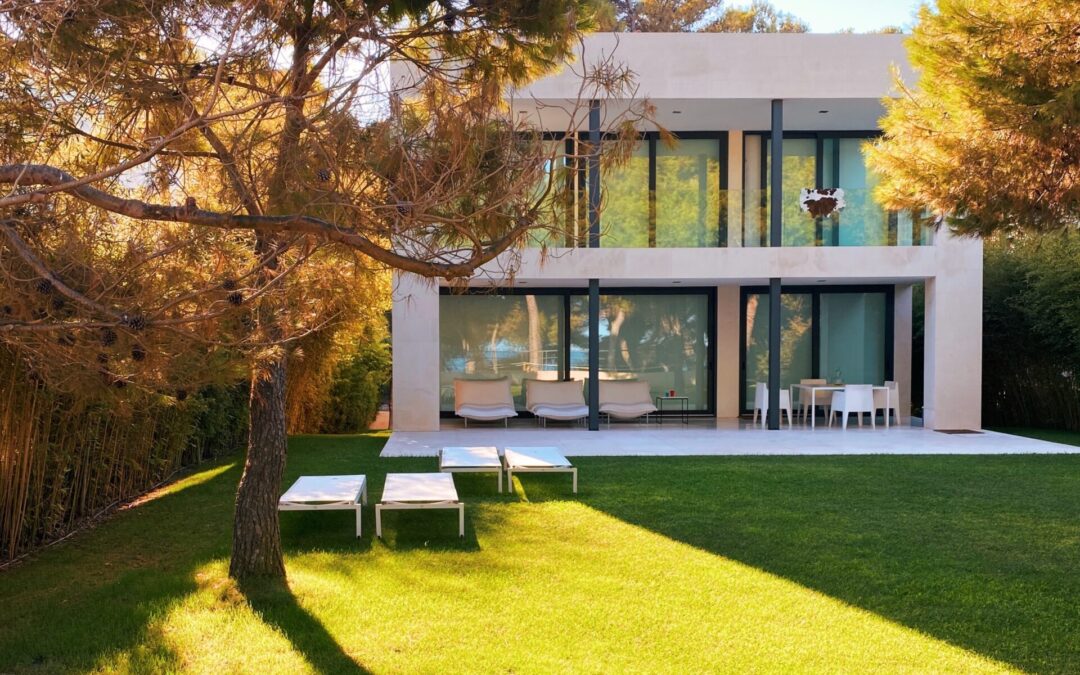The COVID-19 pandemic shifted the way we see and live in our Vancouver homes. Working from home became a normal trend, and for many, the convenience of having an outdoor space became apparent. Gardens aren’t considered necessary to every Vancouver resident, but when looking to buy or sell a property, it does pose the question of how much garden space does a family need in their home?
2022 is the ‘Year of the Garden’, a centennial celebration of Canada’s horticulture. Celebrating the rich garden heritage, the celebration aims to promote the vibrant culture of our external spaces whilst creating and upholding sustainable legacies for generations to come.
There has never been a more appropriate time for such a celebration, as we emerge from a pandemic that highlighted the potential and importance of our gardens.
As with every property, prospective buyers and renters will have varying requirements from both their internal and external spaces. The purpose of intent for a garden will dictate just how much space a family requires.
Consider the Climate
Before drawing up any proposals or plans for your external space, you need to consider the climate in Vancouver. Building a swimming pool or outfitting your garden space for terraces to enjoy barbecues is great in favorable summer weather, but the plunging conditions will render these amenities impractical and virtually unusable during the winter months.
If you are planning to utilize your garden for growing and harvesting food, you will need to consider what types of produce you will wish to use; as each one has different space and growth requirements.
How Much Garden Space Does a Family Need for…
An Outhouse/ Summerhouse
Summerhouses are ideal for creating internal spaces on a budget without having to extend the property itself. When utilizing space correctly, summerhouses have great potential to add value to both the garden and the property. They are ideal as contrary to their name, they can be used during all seasons.
Most summerhouses are traditionally built in unused corners of garden plots, subject to the condition of the land. The size of your summerhouse may need to be considered from a planning perspective, as you may find that you will have to file a planning application in the event the structure stands at over 2 – 2.5m tall. You should also ensure you have plenty of garden space leftover so that your summerhouse does not take up the whole plot.
A typical size for a summerhouse is 8” x 10”, so you should look to have a garden at least twice the size of this in order to maximize space.
A Swimming Pool
Swimming pools are a desirable amenity that is great for gatherings and exercise. They are a sizable commitment, both in dimensions and finances, however.
As with gardens themselves, not all pool needs are the same in the same way that not all garden spaces are utilized for the same purpose. The space you must work with in your garden will dictate the size of the pool you can install, as well as any other design features you may want to integrate, such as an attached jacuzzi.
Recreational swimming pools will typically need a shallower end for children/ less confident swimmers, so this needs to be factored into the dimensions.
For families of anywhere between six to eight people (or guests). BR Pools recommend an 18” by 36” pool, which is sufficient to avoid crowding whilst still allowing space to utilize the pool. For smaller families or where the pool would not be the central attraction of a gathering/ party, then a slightly smaller pool at 16” by 32” would be ideal.
For smaller gardens, pools in the 14” by 25” range still give plenty of versatility. You should factor in a safe perimeter (at least 5”) around the pool. On the basis of wanting a garden space surrounding the pool, families would typically want a pool to be no larger than ¾ the total size of the available space.
Vegetable Garden
Research shows that 67 percent of Canadians who took up gardening in 2020 were influenced to do so by the pandemic. Fears surrounding the quality, pricing, and availability of food were driving factors in many Canadians discovering their green thumbs.
Vegetable gardens vary depending on the type of produce a family intends to grow, which in turn can be dictated by the space available. There are many great hacks to best utilize available space for growing produce, such as raised vegetable gardens.
In the 1970s, the Ecology Action Organization (EAC), along with John Jeavons, found that 4000 square feet of growing space were enough land to sustain one individual person on a vegetarian diet for one whole year, with another 4000 square feet for access paths and storage. For a plot, this equates to 80 feet x 100 feet.
There are a number of Canadian ecology platforms that suggest modern families should factor in 200 square feet of garden space per occupant in the property. This can be altered depending on the type of produce intended to be grown. Some produce, such as basil, require very little plot space in the garden for a family size of four individuals, yet others such as corn can require a row length of 100ft or more. The key is identifying which produce you would intend to grow and plan accordingly how best to utilize garden space. There are a number of growth calculators that present a realistic expectation in how much space is required for certain types of produce based on the number of household occupants.
Ultimately, determining how much garden space you need in your family home depends on your intentions. When looking at prospective houses to purchase, speak with the realtor to determine the size outright, and also see what the current homeowners have been able to do with the space.
If you are selling your home, then it can be beneficial to convey what potential the garden space has, and what it can be utilized for.





